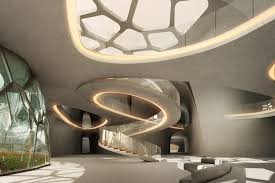
As space exploration pushes beyond Earth’s boundaries, NASA continues to seek innovative solutions for long-term space habitation. One of the most groundbreaking concepts being researched is the development of sustainable habitats made from fungi, or “mushroom houses.” This revolutionary idea aims to create living structures grown from mycelium, the root-like structures of fungi, offering an eco-friendly and self-replicating solution for space settlements.
The Challenge of Building in Space
Building habitats on other planets or the Moon presents numerous challenges, such as transporting construction materials, dealing with harsh environments, and maintaining a sustainable supply chain. Conventional building materials like steel or concrete are heavy and expensive to transport into space. Additionally, these materials don’t offer the flexibility needed to adapt to changing environmental conditions or expanding habitat needs.
Myco-Architecture: The Role of Mycelium
Mycelium, the vegetative part of fungi, has emerged as a promising material for constructing space habitats. Mycelium grows rapidly, can be molded into various shapes, and is incredibly strong when dried. NASA’s “Myco-architecture” project aims to harness the natural growth capabilities of mycelium to create sustainable and durable structures for space colonies. This fungal network could be used to “grow” habitats that are lightweight, biodegradable, and resilient to space conditions.
How Mushroom Houses Would Work
The concept involves growing the houses from mycelium in a controlled environment. Astronauts could potentially bring spores or lightweight initial materials to space, where the fungal growth would be activated. Over time, the mycelium would expand, forming the structure of the habitat. The end result would be a fully grown, robust shelter that is both insulating and protective against radiation—a major concern in space environments.
Environmental Benefits of Mushroom Houses
Mushroom-based construction offers significant environmental benefits, both for Earth and space. Unlike traditional materials, mycelium is renewable and can be cultivated with minimal resources. It requires little energy to grow and can be sourced from organic waste. The structures are also biodegradable, meaning they leave no harmful environmental footprint. This aligns with NASA’s goal of creating sustainable, closed-loop life support systems for space exploration.
Adaptation to Harsh Space Conditions
One of the biggest concerns for space habitation is protection against extreme temperatures, radiation, and micrometeorites. Mycelium has the potential to provide both thermal insulation and protection from radiation. By combining fungal materials with other elements like regolith (the soil on the Moon or Mars), NASA could create composite materials that are even more durable and suited to extraterrestrial environments.
The Future of Mycelium Construction on Earth and Beyond
While NASA’s primary focus is on space exploration, mushroom-based architecture could have profound implications on Earth. Myco-architecture presents an innovative, sustainable solution for housing in regions impacted by climate change or resource scarcity. Structures grown from fungi could be used in disaster recovery situations, where rapid, eco-friendly housing solutions are necessary.
Challenges and Ongoing Research
Although mycelium shows great promise, there are still challenges to overcome. The growth process needs to be refined to ensure structures are strong enough to withstand the harsh conditions of space. Researchers are also working on methods to control the growth of the mycelium to create specific architectural designs. Additionally, NASA is exploring how to integrate other sustainable technologies, such as water recycling and air purification, within these fungal habitats.
NASA’s plan to grow mushroom houses offers an exciting glimpse into the future of space exploration and sustainable living. By leveraging the natural properties of fungi, NASA could provide astronauts with safe, eco-friendly habitats on the Moon, Mars, and beyond. As research progresses, mycelium construction might not only revolutionize space colonization but also offer innovative solutions for sustainable architecture on Earth.
Subscribe to Follow Global Trends for daily global news.
Find Out How To Make Money As A Full Time Writer/Blogger Guide.
To Advertise, Advertise Your Affiliate Links on FollowGlobalTrends.com for Just $1 Per Link Per Month!
Related Articles
Growing mushroom houses
Moon habitat
Mycelium construction
Lunar architecture
Sustainable building materials
Space habitation
Fungal growth
Myco-architecture
Extraterrestrial construction
Lunar environment
Renewable resources
Self-repairing materials
Space exploration
Written By: Enyoghasi Ngozi pricillia

